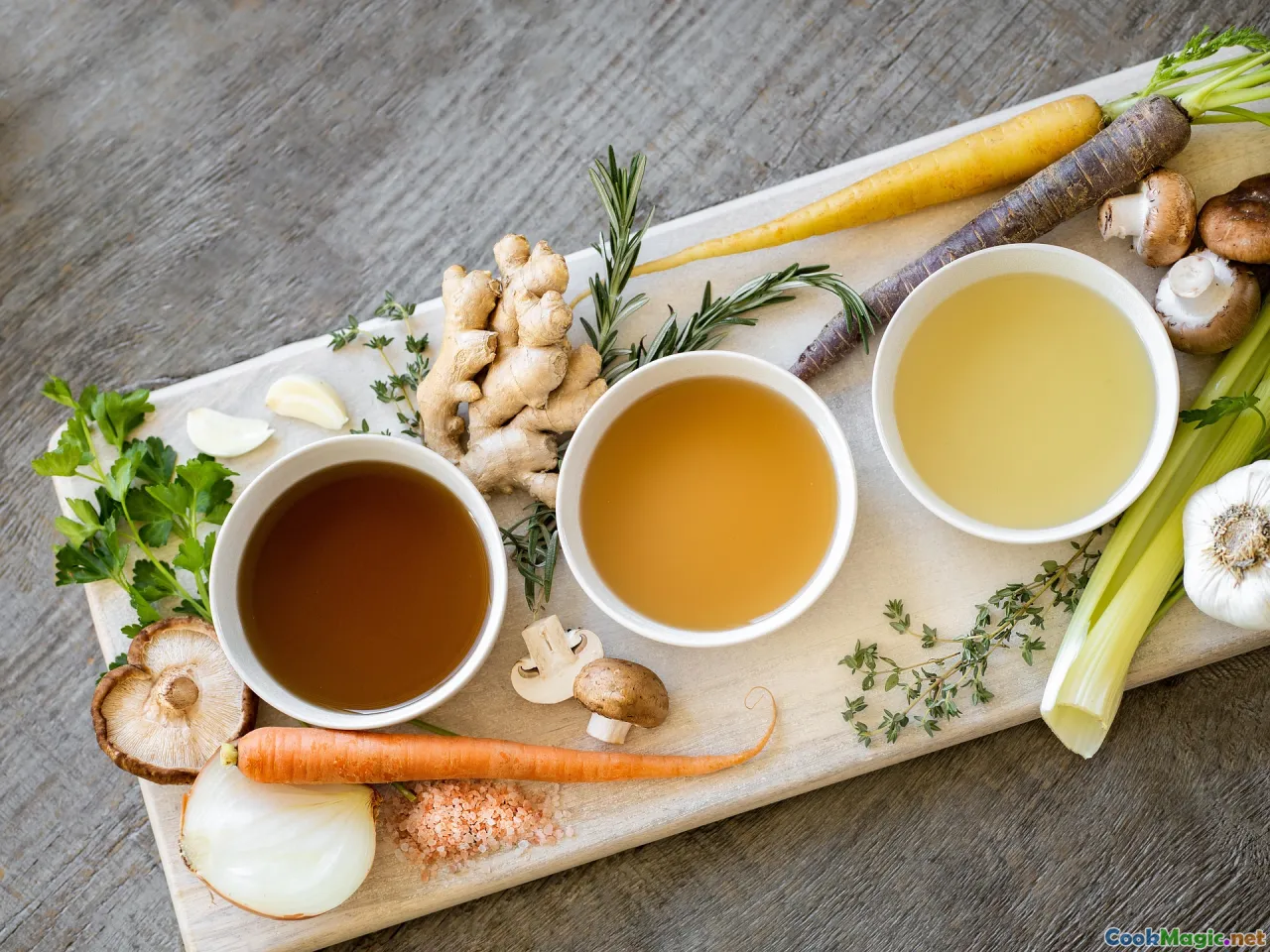Building Flavor with Homemade Vegetable Broth
11 min read Discover how to craft rich, flavorful vegetable broth at home to elevate soups, stews, and more with depth and natural goodness. October 01, 2025 00:05
Building Flavor with Homemade Vegetable Broth
Few kitchen endeavors evoke the soul of culinary tradition quite like crafting a rich, shimmering homemade vegetable broth. It’s the subtle art of extracting unassuming ingredients—ends of produce, stale herbs, trimmed vegetable scraps—and transforming them into something profoundly flavorful, aromatic, and nourishing. For many cooks, this humble liquid is the backbone of countless dishes, an invisible maestro orchestrating harmony among flavors, textures, and aromas. The process is more than technique; it’s a mindful ritual rooted in history, culture, and personal memory.
In this exploration, we’ll delve into how building a masterful vegetable broth elevates your cooking, the nuances that make homemade so superior, and practical tips to unlock a world of depth with everyday produce. From simmering in grandma’s kitchen in Provence to bustling Asian street foods, the moments, memories, and sensory delights of homemade broth continue to inspire chefs and home cooks alike.
The Art and Soul of Homemade Vegetable Broth

Creating vegetable broth is as much an art as it is a science. It’s about respecting each ingredient’s contribution, understanding which flavors to amplify, and cultivating patience. Unlike canned or boxed broth, which often relies on preservatives and flavor enhancers, homemade broth leverages natural elements, allowing their intrinsic qualities to shine.
Culturally, broth has served as the ultimate comfort—the soul nourishment that transcends borders. In Italy, a good veggie broth is the secret base for countless minestrone and risottos. Middle Eastern kitchens use it as a foundation for spiced lentil soups, infusing layers of cumin, coriander, and lemon. In Mei’s noodle shop in Shanghai, dainty simmering pots fill the air with the fragrance of ginger, scallion, and umami-rich vegetable scraps.
Making broth is about more than just resourcefulness—it's mindful sustainability. Discarded vegetable ends—carrot peels, celery leaves, mushroom stems—are transformed into liquid gold. It’s a beautiful way to connect with ingredients, respecting their journey from soil to plate.
Building a Flavorful Vegetable Broth: Step-by-Step

Selecting Your Ingredients
The foundation of a flavorful broth lies in quality: fresh vegetables, herbs, and a good water base. Think of the vegetables as the orchestra players—they need to be flavorful, fresh, or at least well-preserved.
Common ingredients include:
- Root vegetables: Carrots (sweetness), parsnips (earthiness), turnips (mild bitterness)
- Alliums: Onion ends, leek bottoms, garlic peels—these are flavor magnets.
- Celery: Leaves and stalks add depth.
- Mushroom stems: For umami richness.
- Herbs: Bay leaves, thyme sprigs, parsley stems, oregano
- Peppercorns and spices: Black peppercorns, whole coriander, a cinnamon stick if accepting a more complex profile.
Preparing Your Soup Base
Start by roughly chopping vegetables. No need for perfection; coarseness helps in extraction. Sautéing onion, garlic, and celery in a splash of oil for 5–10 minutes before adding water can boost aromatic yield.
Simmering to Extract Depth
Add ingredients to a large pot, cover with cold water (about 4–6 quarts for a standard batch). Bring to a gentle boil, then reduce to a slow simmer. The magic happens here—over 45 minutes to 2 hours, the flavors coalesce. Skim any foam or impurities occasionally.
The Art of Straining
Once the broth displays a golden hue, strain through a fine-mesh sieve or cheesecloth. Don’t press too hard—gentle handling keeps clarity. Discard solids or compost for a second, more concentrated brew if desired.
Seasoning and Adjustments
A splash of salt is best added off the heat, to avoid oversalting. Taste to gauge acidity; a squeeze of lemon or a dash of vinegar can brighten the umami or balance sweetness.
Cooling and Storage
Let your broth cool rapidly in an ice bath if storing long-term. Store in glass jars or BPA-free containers, refrigerated for up to 5 days, or frozen for months.
Why Homemade Trumps Store-Bought

While convenience has us reaching for cartons, the flavor profile of homemade broth far surpasses most commercial options.
Unadulterated Purity
Commercial broths often contain salt, preservatives, flavor enhancers like monosodium glutamate (MSG), and genetic modifications. Homemade broth, by contrast, can be tailored precisely, free of additives, with a complexity borne of real ingredients.
Flexibility and Customization
Want a vegetarian broth with a touch of smoked paprika or fresh herbs? Or perhaps a clear, dehydrated broth for a special consommé? Making your own allows complete control.
Enhanced Nutritional Profile
Slow simmering vegetables releases vitamins, minerals, and antioxidants into the broth—nutrients that missing from overly processed versions.
Environmental and Cost Benefits
Using scraps reduces waste and economizes. Over time, homemade broth becomes a greener choice, aligning with sustainable cooking practices.
Elevating Classic Dishes with Your Broth

From a warming vegetable ragout to a silky risotto, homemade broth elevates your dishes beyond the ordinary.
Risotto with Depth
Adding homemade vegetable broth to arborio rice during cooking results in a symphony of layered flavors—earthy, sweet, and umami. It transforms a simple rice dish into a creamy, satisfying masterpiece.
Asian-Inspired Noodle Soups
In the bustling streets of Bangkok or Shanghai, a spoonful of bright, flavorful broth—enriched with mushroom or soy—creates a multi-dimensional base for noodles, tofu, and greens. Using your own broth ensures authenticity and rich aroma.
Rustic Vegetable Stew
Simmer chunks of root vegetables in your carefully crafted broth, seasoning with fresh herbs. The broth lends complexity and a cozy, velvety mouthfeel—an unpretentious yet deeply flavorful comfort food.
Vegetarian and Vegan Staples
Homemade broth provides a lush foundation for plant-based dishes, blending seamlessly into pureed vegetable soups or lentil stews, amplifying natural flavors without the need for artificial seasoning.
Personal Insights and Tips for Perfect Broth

Use Vegetable Scraps Creatively
Keep a jar on your countertop or in the freezer for scraps like carrot peels, onion ends, wilted herbs, and mushroom stems. When full, simmer for a flavor-rich broth.
Mind the Seasonality
Using seasonal vegetables—spring peas, summer zucchini, autumn squash—matches the natural sweetness and freshness of produce with the time of year.
Don’t Overcrowd or Overcook
Balance the ingredients; too many can flood the pot with overwhelming flavors, and overcooking can release unpleasant bitterness or diminish bright aromas.
Experiment with Aromatics
Add a cinnamon stick, star anise, or a few slices of fresh ginger for an unexpected flavor twist, especially suited to Asian or Middle Eastern cuisines.
Keep It Clear and Bright
Once strained, skim any surface fat or impurities. You can also use a touch of cold water or gentle ice cubes to clarify further for elegance in presentation.
Reuse and Reinvent
Strain your initial broth and use it as a cooking water for grains, pasta, or even rice seasoned with herbs and garlic. It’s a second layer of flavor, extending your culinary resourcefulness.
As you develop your skill in building vegetable broth, you’ll discover it’s less about ingredients and more about intent—an act of love, resourcefulness, and curiosity. This humble liquid, simmered with patience and care, can transform your kitchen into a place of aromatic discovery and soulful cooking.
Remember, each batch echoes traditions, personal stories, and the seasons—not just an ingredient, but a vessel of your culinary journey. Embrace this process, and let your homemade vegetable broth be the conduit for creating vibrant, memorable dishes that honor the art of slow, conscious cooking.
Bon appétit, and happy simmering!









